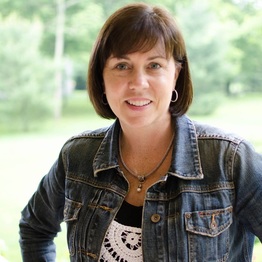
Jamie Jamison of Canfield knows something about building an audience on Instagram.
Jamison, who describes herself as a “photo stylist, visual storyteller, social media content creator, mixed media artist,” has attracted more than 15 thousand followers to her @alajamie account. She makes it look easy. And as Jamison explains it, anyone can build an audience by applying a few tried and true content marketing strategies. I recently sat down with Jamison to talk about her passion for photography, flowers and still life, and how all of that translates into a winning Instagram profile. Q. How did you get started using Instagram? A. I joined several years ago and I didn’t know what to do with Instagram, so my account was inactive. Then, I attended a photo retreat and the attendees loved Instagram, so I decided to make more of an effort. Initially, I thought it would be a great marketing tool to see how people responded to my photos. What I found was a much greater community and inspiration. I started posting daily and my followers and engagement started to climb. Q. Is there a specific focus to your posts? A. My initial focus was general still life, but as I started taking pictures I realized that I was drawn to flowers and unique props, with vintage pieces or handmade items. I made a choice to try to include seasonal flowers and cool props. I’ve always loved antiques and felt it was a great way to give them new life. I also run a weekly “contest” called #petalsandprops. I select four photos each Monday from other photographers that I think reflect great flowers and finds. Q. How did your followers find you? A. First and foremost, I posted great content. Second, I engaged with others. And third, I used specific hashtags to promote my photos. Now I have a stronger, consistent hashtag strategy. Using #petalsandprops has attracted more followers. Q. How did you build an audience? A. I built it organically. This is important. Never, ever pay for followers. It’s obvious when someone has done that. You usually see lots of followers and low engagement. The key is really putting out great content and doing it consistently. Q. Do you have any advice for people who are trying to build an audience on Instagram? A. First, decide what your social media strategy is for your business. Instagram is a terrific tool, but it is not for every business. If it makes sense for you, commit to maintaining a consistent presence. Posting every day is optimal. You can’t grow an audience if you only engage once a week. Think of it as a conversation with your customers. The more you talk to them, the more they will engage with you. Want to see more of Jamison’s work? Go to alajamie.com.
0 Comments

A friend of mine has two teenage daughters with smartphones. One is 14 and the other is 13, and by his estimation, they were late to the smartphone game.
Some kids get smartphones while in their pre-teen years — 10, 11 and 12. Add my 11-year-old daughter to that list. To be honest, I fought my wife on this decision. I lost. My wife was convinced our daughter was ready, and I was on the fence. To be even more honest, I think my reservations were more rooted in the fact that my baby is growing up too fast, and I’m trying (unsuccessfully) to stop that. I’ve learned a lot of things about what makes a kid ready for this level of responsibility in the short time our daughter’s had a smartphone. Let’s face it: this is a big test for a kid. To have that kind of power – a super computer with the ability to connect to the world beyond our small family unit – is kind of scary. So, if you’re considering getting a smartphone for your teen or pre-teen, here are my recently tested guidelines: No Magic Age. I’ve said this before in other columns about kids and technology, so of course the same holds true here. Every kid is different, with varying abilities, and certainly different maturity levels. My daughter is smart. In fifth grade she wrote a poem in which she described herself as “odd and responsible.” So yeah, any kid who can self-reflect and come away with “responsible” is probably ready to have the smartphone conversation. Data Costs Money. We explained to her that data costs money, and that every time she played a game she was using up our shared data. We stopped for lunch a few weeks ago and she immediately got on the restaurant’s WiFi instead of 4G to watch a YouTube video. Smart kid, but, we also had the watching-videos-on-your-phone-while-having-lunch-with-your-family conversation, too. Be Mentally Prepared. I’m prepared for the worst to happen. She may lose it. She may drop it down a well. I’ll be “understanding” (if only on the outside). This is tough for a control freak like me, but I know that we all do stupid things with our phones (see my earlier column on dropping phones in port-a-potties). If she breaks it, she’ll learn an important lesson. And better she learn it now, in a safe space, than when she’s on her own. Know Your Options. When we walked into the phone store, the first words out of my mouth were “We need a phone for our daughter and I don’t want to go broke.” The sales rep laughed. He’d clearly had this conversation before, and showed us a Samsung device that had most of the same features as a Galaxy S7, but for a lot less money. So if she does lose the phone, I won’t lose my mind. 
According to a new Pew Research Center report, black social media users are twice as likely as whites to say that the posts they see on social networking sites are about race.
A similar gap was found among blacks and whites who said they actually post content about race relations. Black social media users were twice as likely than white users to say they post about race. Most white users (68 percent) said they avoided posting or sharing anything about race. This study is important because it reflects the willingness to talk openly about racial issues on social media. It also might show a level of selective perception of social media content about race. You can read the study here: http://www.pewinternet.org/2016/08/15/social-media-conversations-about-race/ We know that many people are already using social media to find information and to get involved in social movements. Earlier, Pew studies found that Americans are using social media to get their news. Others are using social media to encourage followers to get involved with causes and community activist groups. But social media also serves as an important outlet for connecting people who would otherwise never meet, people who share common interests, who share ideas, and talk about their communities. Authors of the Pew Research Center report, Monica Anderson and Paul Hitlin, noted that “at times, Twitter, Facebook and other social media sites can help users bring greater attention to issues through their collective voice.” Social media should give people a voice about race, but apparently some are reluctant to speak up. The same can’t be said about our willingness to use social media to post thoughts and ideas about politics. For example, do a quick perusal of Facebook and Twitter and you’ll find many users, regardless of race, have opinions about the candidates for U.S. president. People are openly engaging in debates about Trump and Clinton. However, there may be just as many people avoiding social media as a way to block out the negativity (maybe Pew researchers will study that next). Still, when it comes to race, hashtags such as #BlackLivesMatter and #Ferguson should be opening the door to discussions and idea sharing. There’s often a peak in conversations in the wake of a tragic event. For example, in July, social media posts spiked after the deaths of two black men at the hands of police and the shootings of police officers in Dallas and Baton Rouge, La. Beyond the 3,769 telephone interviews Pew researchers conducted with U.S. adults in early 2016, they also looked at the amount of publicly available tweets about race over a 15-month period (in 2015 and early 2016). During that time, 995 million tweets about race were posted, or about 2.1 million tweets per day. But there are more than 500 million tweets per day, so tweets about race make up less than 1 percent. So not only are some people reluctant to talk about race, some are simply being drowned out by the cacophony of social media voices. 
Last weekend, my family took our first camping trip. We traveled the short trek to Cook Forest, a beautiful state park in the heart of the Pennsylvania wilderness.
Like most family trip decisions, there were a few non-negotiables, including “no tents” (I’ll be waiting for diehard campers to tell me that tent-less camping is not camping; for the record, I agree). We agreed on a cabin. We also agreed that we didn’t want to be near other cabins. But most rentals in Cook Forest are set up like cabin communes, with one cabin right next to the other. This isn’t bad. We just wanted a little more seclusion. This is when I turned to Airbnb, one of several online sites where people list homes, apartments, and yes, even cabins in the woods for other travelers to reserve, pay and stay. This was our first Airbnb experience. To be honest, I was always a little leery of using Airbnb to stay in someone else's home. Add four kids to the mix, and thoughts of someone breaking a lamp or a dish or "fill-in-the-blank" make me anxious. For some reason, I’m less concerned if this happens in a regular hotel room. Airbnb's "About Us" page reads, "Whether an apartment for a night, a castle for a week, or a villa for a month, Airbnb connects people to unique travel experiences, at any price point, in more than 34,000 cities and 191 countries." For the Earnheardts, a secluded cabin in Cook Forest would be a "unique" travel experience. Many residents of Northeast Ohio are quite familiar with Cook Forest. Ask around and you’ll find the "regulars," those who camp there every summer. Longtime campers enjoy autumn trips to Cook Forest, when the trees explode with red and orange leaves. Clarion, Pa., a few miles south of Cook Forest, proudly refers to itself as the "Autumn Leaf Capital of the World." After living there for more than 10 years, my wife and I wanted our kids to experience Cook Forest, to ride inner-tubes down the Clarion River, to hike the trails, to cook out on an open fire. However, Cook Forest regulars are probably familiar with the mass of humanity that hits this area on weekends. So, if you plan to stay in a cabin and don’t want to feel crowded, you need to look outside the touristy areas. Airbnb provided some great options. After reading reviews from other travelers for several locations, we selected a cabin in the middle of nowhere. Once our reservation was accepted by Nancy, the owner, we began communicating almost immediately. She answered all of our questions and made us feel welcome, weeks before our trip even began. To complete the Airbnb experience, we posted a positive review on the cabin’s listing page. In turn, Nancy posted a positive review of us. Thankfully, no broken lamps. 
DOYO Live, Youngstown’s first-ever content marketing and interactive design conference, will take place tomorrow at Youngstown State University.
It’s an important milestone in Youngstown’s decades-long recovery and, in my estimation it’s more proof that people from outside the region recognize the Valley as a place to learn, to grow and do business. For more proof one needs only look to the technology companies emerging from the Youngstown Business Incubator (and other businesses choosing to relocate to the YBI campus from New York and California), America Makes and the power of additive manufacturing, and the millions-of-dollars in grants and gifts flowing into YSU for research and education. Want more proof? People who left the Valley to find opportunities in other cities are returning with a new business acumen, fresh perspectives on the role technology plays in our personal and professional lives, and an impressive network of business contacts. Professionals like marketing consultant, Dennis Schiraldi, who followed job opportunities in New York City, Cleveland and Columbus, only to return to Youngstown three years ago to be a part of the revitalization. Following our talks at TEDxYoungstown, Schiraldi shared with me his vision for bringing a first-class social media marketing conference to Youngstown. Note that Lori Shandor, co-founder of TEDxYoungstown, was instrumental in spurring that conversation (even if she doesn’t know it). TEDxYoungstown brought a lot of people together to talk about technology, business and opportunities. In some ways, DOYO is a continuation of those TEDx talks, albeit with a focus on marketing and interactive media. Eighteen months later, we’re seeing Schiraldi’s vision come to life. Schiraldi now gets to add “Founder of DOYO Live” to his impressively expanding resume of experiences. We also refer to Schiraldi as DOYO’s chief evangelist, a title he now proudly displays on his Facebook page and LinkedIn profile. If that title sounds familiar to you, it’s also the title bestowed on Jim Cossler, CEO of the YBI. The title is significant because it recognizes these individuals as leaders who preach growth and opportunities available in Youngstown to people outside the region. Cossler does this by luring great tech start-ups to the Valley. Schiraldi is doing this by bringing leading social media, marketing and design experts to share their knowledge with professionals from Youngstown and beyond. On a personal note, Schiraldi is also a part-time instructor in our department of communication at YSU. I’ve witnessed first-hand the evangelical power he brings to the classroom, energizing the next generation of social media marketers, right here in our own backyard. In many ways, social media has made the world smaller. You don’t need to be in New York City or Chicago, Shanghai or Dubai, to meet amazing professionals, to network, and to learn about the future of social media and marketing. You can do that right here in Youngstown. |
AuthorDr. Adam C. Earnheardt is special assistant to the provost and professor of communication in the department of communication at Youngstown State University in Youngstown, OH, USA where he also directs the graduate program in professional communication. He researches and writes on a variety of topics including communication technologies, relationships, and sports (with an emphasis on fandom). His work has appeared in Mahoning Matters as well as The Vindicator and Tribune-Chronicle newspapers. CategoriesArchives
July 2023
|
 RSS Feed
RSS Feed